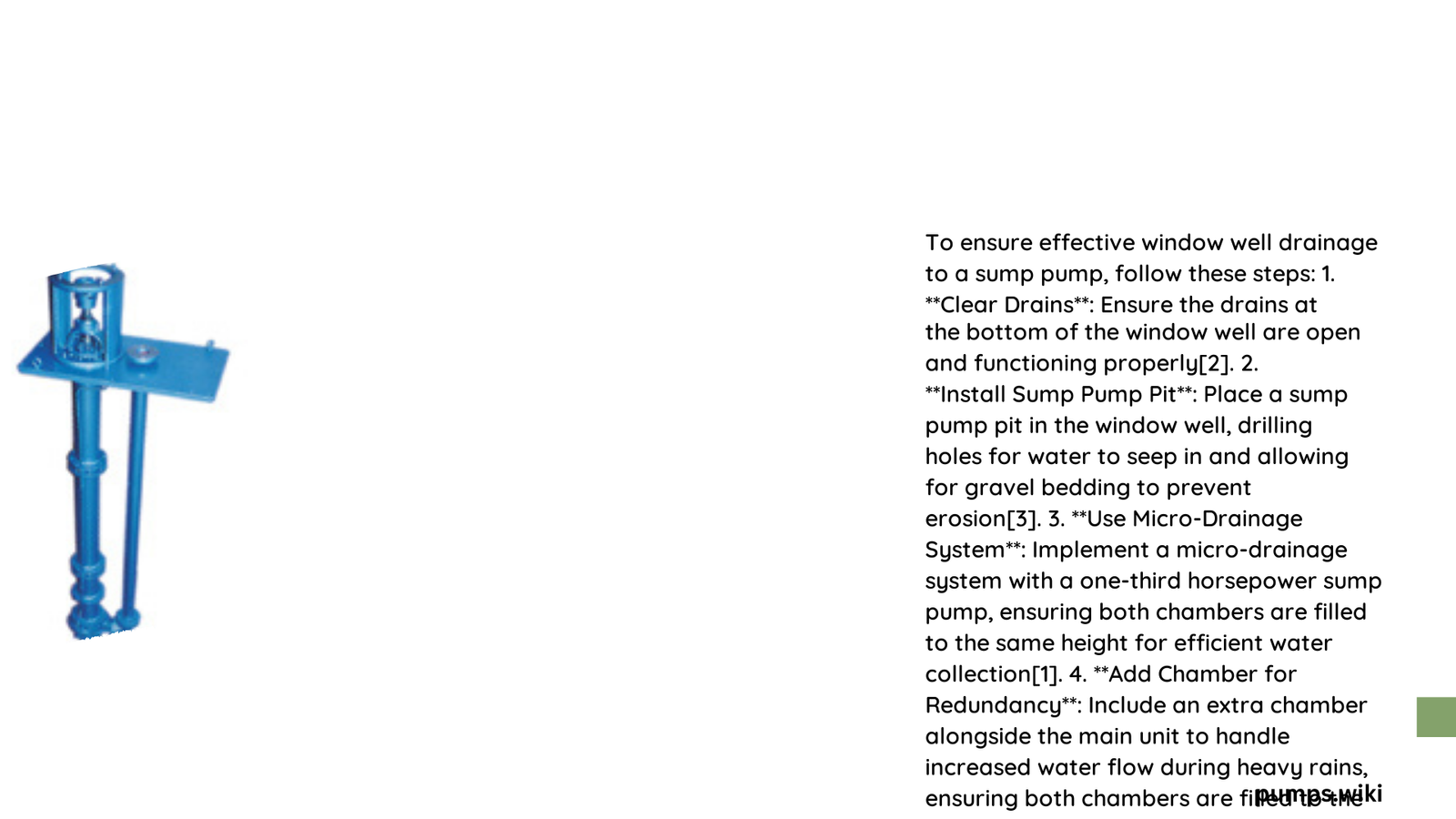Window well drainage to sump pump represents a critical home protection strategy that prevents basement water intrusion. Homeowners face significant risks from improper water management, including structural damage, mold growth, and foundation deterioration. By implementing a comprehensive drainage system that effectively channels water from window wells into a sump pump, you can safeguard your property against potential water-related challenges and maintain a dry, secure basement environment.
What Makes Window Well Drainage Critical?
Water accumulation around basement windows can lead to substantial structural and moisture-related problems. A well-designed window well drainage system serves multiple protective functions:
Why Proper Drainage Matters?
- Prevents Water Infiltration: Redirects water away from foundation walls
- Reduces Hydrostatic Pressure: Minimizes potential structural stress
- Protects Basement Integrity: Prevents moisture-related damage
- Enhances Property Value: Demonstrates proactive home maintenance
How to Design Effective Window Well Drainage?

Optimal Window Well Specifications
| Component | Recommended Specification |
|---|---|
| Well Floor Space | Minimum 9 square feet |
| Horizontal Width | At least 36 inches |
| Depth Below Window Sill | 8-12 inches |
| Gravel Layer | 8-12 inches deep |
What Materials Work Best?
Selecting appropriate materials ensures long-term drainage effectiveness:
- Drainage Gravel: Use clean, crushed stone with minimal fine particles
- Perforated Drain Pipe: High-density polyethylene (HDPE) recommended
- Landscape Fabric: Prevents sediment clogging
- Sump Pump: Submersible, corrosion-resistant model
How to Connect Window Well to Sump Pump?
Step-by-Step Installation Process
Preparation
- Excavate area around window well
- Ensure proper slope away from foundation
- Remove existing soil and debris
Drainage System Setup
- Install perforated drain pipe
- Wrap pipe with landscape fabric
- Surround pipe with drainage gravel
- Connect pipe to sump pit
What Challenges Might You Encounter?
Potential installation challenges include:
– Underground utility interference
– Difficult soil conditions
– Existing landscape constraints
– Budget limitations
Maintenance Recommendations
How Often Should You Inspect?
- Monthly: Quick visual inspection
- Bi-Annually: Comprehensive system check
- Annually: Professional evaluation
Maintenance Checklist
- Clean drain pipe openings
- Check gravel for sediment accumulation
- Verify sump pump functionality
- Inspect window well covers
Cost Considerations
Estimated Investment Range
| Service | Typical Cost |
|---|---|
| Materials | $300 – $800 |
| Professional Installation | $1,000 – $3,000 |
| Annual Maintenance | $100 – $300 |
Pro Tips for Success
- Always obtain local building permits
- Consider professional consultation
- Use high-quality, durable materials
- Plan for potential future expansions
When to Seek Professional Help?
Consult experts if you experience:
– Persistent water accumulation
– Significant foundation cracks
– Complex drainage scenarios
– Limited technical expertise
References:
– True North Concrete Cutting
– Marchi Paving
– Window Well Experts
